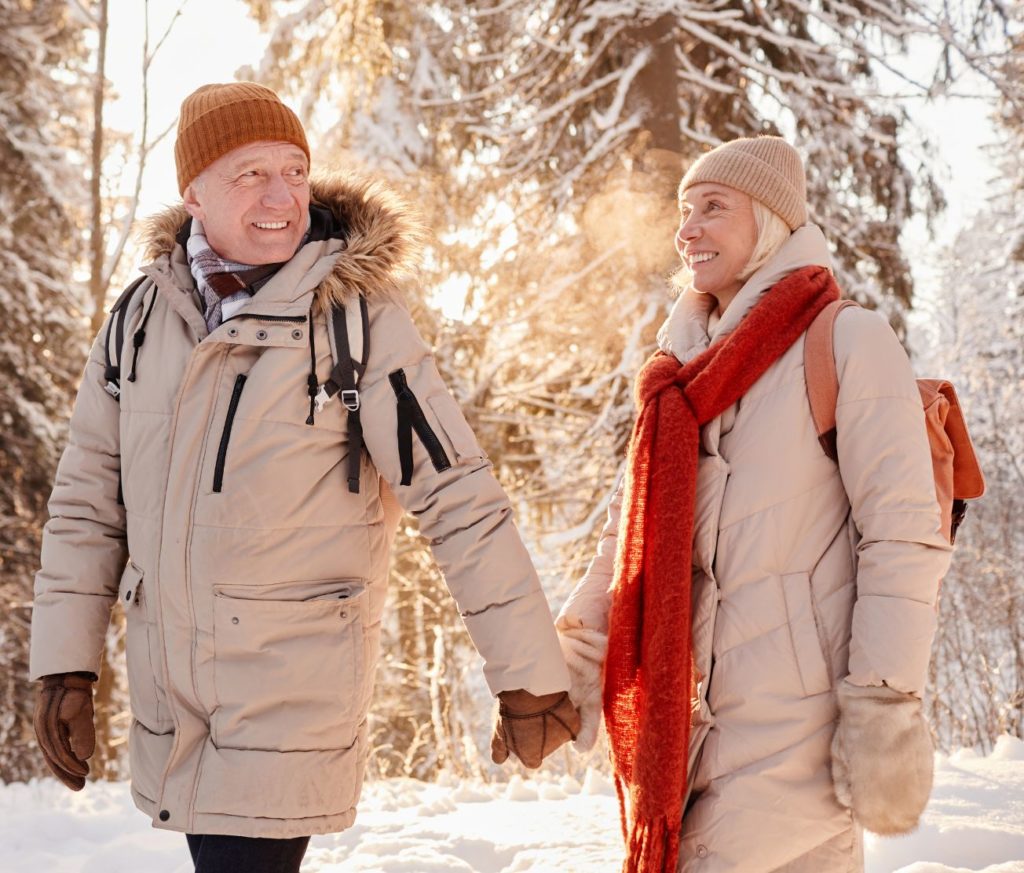 The winter season poses hazards for people of all ages. Slippery surfaces that increase fall risks are one common concern, particularly for older adults. Seniors are more vulnerable due to age-related changes like decreased muscle mass and mobility. Fragile bones make falls more serious, while frostbite and hypothermia risks are also elevated. When you travel outdoors this winter, know how to stay safe.
The winter season poses hazards for people of all ages. Slippery surfaces that increase fall risks are one common concern, particularly for older adults. Seniors are more vulnerable due to age-related changes like decreased muscle mass and mobility. Fragile bones make falls more serious, while frostbite and hypothermia risks are also elevated. When you travel outdoors this winter, know how to stay safe.
Precautionary Measures
Preparation is essential, including proper clothing and footwear. Layer warm clothing and remember to wear a hat and gloves. Put on boots with textured, non-slip soles that will offer some traction. Any mobility devices should also be assessed to ensure they provide proper support in winter weather.
If you are unable to clear your own steps and walkways, consider having a neighbor or family member shovel and salt these areas. Keep in mind, the physical strength required to shovel – coupled with cold conditions – can put excess strain on the heart and increase fall risks. The activity is not recommended for older people with osteoporosis or heart disease.
Walking Outdoors
As you move around outside, remain alert to your surroundings and your body:
- Keep your eyes peeled for patches of ice and other slippery areas.
- Use only cleared walkways and sidewalks. If available, hold onto a handrail.
- Move at a slow, consistent pace. Allow for extra time to get to your destination.
- Take smaller, shuffling steps and curl your toes for better traction.
- Keep your hands out of your pockets and only carry small, light items for better balance.
- If a loved one is with you, consider holding onto their arm for stability.
- Know how to fall to prevent serious injuries. Instead of bracing the impact with your hands, keep your head up and curl your body to reduce hip, wrist and head injuries.
- Once you return home, brush off snow before walking through the front door to prevent ice formation or a slick surface near the entrance.
- To make these trips easier, get sufficient physical activity throughout the year.
Be Aware of Frostbite Risks
Extended exposure to cold temperatures increases your chances of frostbite. For older adults, heart and circulation issues can make this hazard more serious.
As you walk outdoors in the winter, be mindful of potential frostbite concerns:
- Fully cover your extremities, including a scarf or balaclava for your face, a hat over your ears and gloves.
- Layer in loose clothing, so there’s more space to create air pockets and keep heat close to you.
- Consider waterproof garments to keep yourself dry in the event of a snow squall.
- If your skin turns red or dark purple, head inside to warm up. Run the area under warm, rather than hot, water.
- Know the signs of frostbite, including skin that turns gray or yellow, feels hard or looks waxy and get immediate medical attention.
If you’re concerned about an aging loved one’s health or your own, contact the medical team at West Hartford Health & Rehabilitation Center to learn more about our services.

